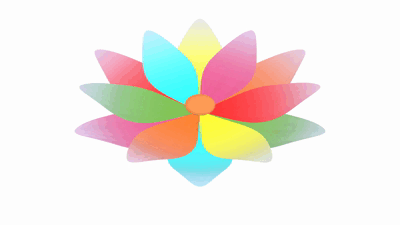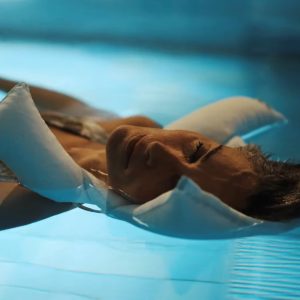- Complete relief from pressure on joints and ligaments
- Deep nervous system relaxation
- Reduced insomnia, muscle aches, and fatigue
- Enhanced emotional clarity and mother-baby connection
- Access to meditative, theta brainwave states
Floatation invites rest at the deepest level — a place where both body and mind can reset.
Swimming While Pregnant: A Full-Body, Low-Impact Ritual
Swimming remains one of the safest and most effective forms of exercise throughout pregnancy. It strengthens the cardiovascular system, tones muscles without strain, and the rhythmic breathing can be calming and meditative.
Benefits include:
- Improved heart health and stamina
- Reduced swelling and better lymphatic flow
- Relief from joint pressure and back pain
- Better posture and spinal alignment
- Encouragement of optimal fetal positioning
Best Strokes for Pregnancy:
- Breaststroke: Ideal for late pregnancy; supports posture and chest opening
- Freestyle (Front Crawl): Great if alignment is maintained
- Backstroke: Safe early on; use caution in third trimester
- Butterfly: Not typically recommended unless you’re highly experienced
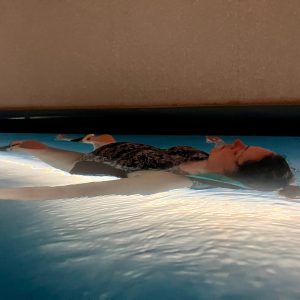
Safety Guidelines & Tips
- Listen to your body and rest as needed
- Stay hydrated before and after sessions
- Avoid hot tubs or high-heat environments
- Ease in and out of pools gently to protect joints and abs
- Eat a light snack 30–60 minutes before sessions
Speak with your doctor first if you have:
- A history of miscarriage or preterm labor
- Placenta previa, ruptured membranes, or cervical insufficiency
- Heart or respiratory conditions
- Multiple pregnancies or a high-risk profile
What to Wear
Opt for maternity swimsuits or two-piece options that offer support and flexibility. Comfort is key — choose breathable, stretchable materials that move with your body and bump.
Final Thoughts
Whether you’re surrendering into Watsu’s flowing embrace, floating in silent stillness, or gliding gently through water with each swim stroke, water becomes more than an element during pregnancy — it becomes a sacred companion.
It holds. It heals. It reminds.
 In the sacred space of water, many women rediscover their breath, their rhythm, and their quiet strength. It’s a time to reconnect with your baby, release tension, and prepare — physically, emotionally, and energetically — for the transformation ahead.
In the sacred space of water, many women rediscover their breath, their rhythm, and their quiet strength. It’s a time to reconnect with your baby, release tension, and prepare — physically, emotionally, and energetically — for the transformation ahead.“I am growing at my own perfect pace.”
Let this be your quiet mantra, whispered in water & carried into birth.
All Photos by Helena Eflerova
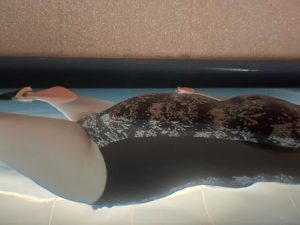
Watsu: Therapeutic Hydrotherapy for the Second & Third Trimester
WATSU (Water Shiatsu) is a form of passive aquatic therapy that combines is a form of warm-water bodywork that blends massage, acupressure, and gentle movement in water heated to around 35°C. The practitioner supports and guides the client through flowing sequences that allow the body to release physical tension and emotional stress.
A 2014 controlled pilot study by Schitter et al. at Bern University Hospital found that Watsu sessions in the third trimester significantly:
- Reduced stress and pain
- Improved mood and mental health
- Increased overall quality of life
Many women describe Watsu as a deeply meditative experience — like being held in the womb of the earth while carrying life within their own.
The rhythmic, fluid motions mimic the safety and stillness of the prenatal environment, offering the mother an embodied sense of peace, trust, and connection.
Note for practitioners: Pregnancy hormones increase joint laxity. Avoid overstretching, particularly in the lumbar spine and pelvis. Focus on supporting the sacrum, encouraging chest expansion, and promoting deep diaphragmatic breathing. Always recommend hydration post-session.
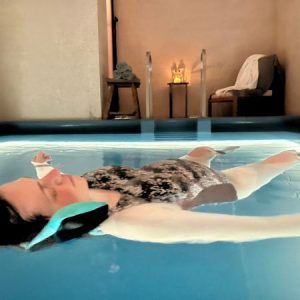
Floatation Therapy: Deep Rest, Zero Pressure
Floatation therapy, or sensory reduction, involves resting in a pod filled with warm, magnesium-rich water — free from light, sound, and external stimuli. For pregnant women, especially in the second and third trimester, this can be incredibly therapeutic.
Benefits include:
- Complete relief from pressure on joints and ligaments
- Deep nervous system relaxation
- Reduced insomnia, muscle aches, and fatigue
- Enhanced emotional clarity and mother-baby connection
- Access to meditative, theta brainwave states
Floatation invites rest at the deepest level — a place where both body and mind can reset.
Swimming While Pregnant: A Full-Body, Low-Impact Ritual
Swimming remains one of the safest and most effective forms of exercise throughout pregnancy. It strengthens the cardiovascular system, tones muscles without strain, and the rhythmic breathing can be calming and meditative.
Benefits include:
- Improved heart health and stamina
- Reduced swelling and better lymphatic flow
- Relief from joint pressure and back pain
- Better posture and spinal alignment
- Encouragement of optimal fetal positioning
Best Strokes for Pregnancy:
- Breaststroke: Ideal for late pregnancy; supports posture and chest opening
- Freestyle (Front Crawl): Great if alignment is maintained
- Backstroke: Safe early on; use caution in third trimester
- Butterfly: Not typically recommended unless you’re highly experienced

Safety Guidelines & Tips
- Listen to your body and rest as needed
- Stay hydrated before and after sessions
- Avoid hot tubs or high-heat environments
- Ease in and out of pools gently to protect joints and abs
- Eat a light snack 30–60 minutes before sessions
Speak with your doctor first if you have:
- A history of miscarriage or preterm labor
- Placenta previa, ruptured membranes, or cervical insufficiency
- Heart or respiratory conditions
- Multiple pregnancies or a high-risk profile
What to Wear
Opt for maternity swimsuits or two-piece options that offer support and flexibility. Comfort is key — choose breathable, stretchable materials that move with your body and bump.
Final Thoughts
Whether you’re surrendering into Watsu’s flowing embrace, floating in silent stillness, or gliding gently through water with each swim stroke, water becomes more than an element during pregnancy — it becomes a sacred companion.
It holds. It heals. It reminds.
 In the sacred space of water, many women rediscover their breath, their rhythm, and their quiet strength. It’s a time to reconnect with your baby, release tension, and prepare — physically, emotionally, and energetically — for the transformation ahead.
In the sacred space of water, many women rediscover their breath, their rhythm, and their quiet strength. It’s a time to reconnect with your baby, release tension, and prepare — physically, emotionally, and energetically — for the transformation ahead.“I am growing at my own perfect pace.”
Let this be your quiet mantra, whispered in water & carried into birth.
All Photos by Helena Eflerova
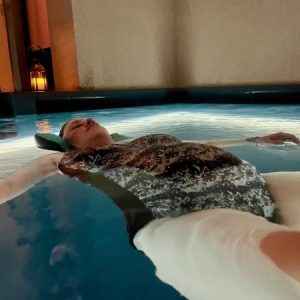
Why Water Works During Pregnancy
Water has long been revered as a nurturing, transformative element — and during pregnancy, it becomes even more powerful. The buoyancy of water supports up to 90% of your body weight, relieving pressure on your joints, spine, and ligaments. This sensation of near-weightlessness is particularly soothing in the later stages of pregnancy, helping to:
- Ease muscular tension, back pain, and sciatica
- Reduce fatigue, heaviness, and swelling in the legs and feet
- Improve circulation and reduce the risk of overheating
- Encourage deeper breathing and a natural sense of calm

Watsu: Therapeutic Hydrotherapy for the Second & Third Trimester
WATSU (Water Shiatsu) is a form of passive aquatic therapy that combines is a form of warm-water bodywork that blends massage, acupressure, and gentle movement in water heated to around 35°C. The practitioner supports and guides the client through flowing sequences that allow the body to release physical tension and emotional stress.
A 2014 controlled pilot study by Schitter et al. at Bern University Hospital found that Watsu sessions in the third trimester significantly:
- Reduced stress and pain
- Improved mood and mental health
- Increased overall quality of life
Many women describe Watsu as a deeply meditative experience — like being held in the womb of the earth while carrying life within their own.
The rhythmic, fluid motions mimic the safety and stillness of the prenatal environment, offering the mother an embodied sense of peace, trust, and connection.
Note for practitioners: Pregnancy hormones increase joint laxity. Avoid overstretching, particularly in the lumbar spine and pelvis. Focus on supporting the sacrum, encouraging chest expansion, and promoting deep diaphragmatic breathing. Always recommend hydration post-session.

Floatation Therapy: Deep Rest, Zero Pressure
Floatation therapy, or sensory reduction, involves resting in a pod filled with warm, magnesium-rich water — free from light, sound, and external stimuli. For pregnant women, especially in the second and third trimester, this can be incredibly therapeutic.
Benefits include:
- Complete relief from pressure on joints and ligaments
- Deep nervous system relaxation
- Reduced insomnia, muscle aches, and fatigue
- Enhanced emotional clarity and mother-baby connection
- Access to meditative, theta brainwave states
Floatation invites rest at the deepest level — a place where both body and mind can reset.
Swimming While Pregnant: A Full-Body, Low-Impact Ritual
Swimming remains one of the safest and most effective forms of exercise throughout pregnancy. It strengthens the cardiovascular system, tones muscles without strain, and the rhythmic breathing can be calming and meditative.
Benefits include:
- Improved heart health and stamina
- Reduced swelling and better lymphatic flow
- Relief from joint pressure and back pain
- Better posture and spinal alignment
- Encouragement of optimal fetal positioning
Best Strokes for Pregnancy:
- Breaststroke: Ideal for late pregnancy; supports posture and chest opening
- Freestyle (Front Crawl): Great if alignment is maintained
- Backstroke: Safe early on; use caution in third trimester
- Butterfly: Not typically recommended unless you’re highly experienced

Safety Guidelines & Tips
- Listen to your body and rest as needed
- Stay hydrated before and after sessions
- Avoid hot tubs or high-heat environments
- Ease in and out of pools gently to protect joints and abs
- Eat a light snack 30–60 minutes before sessions
Speak with your doctor first if you have:
- A history of miscarriage or preterm labor
- Placenta previa, ruptured membranes, or cervical insufficiency
- Heart or respiratory conditions
- Multiple pregnancies or a high-risk profile
What to Wear
Opt for maternity swimsuits or two-piece options that offer support and flexibility. Comfort is key — choose breathable, stretchable materials that move with your body and bump.
Final Thoughts
Whether you’re surrendering into Watsu’s flowing embrace, floating in silent stillness, or gliding gently through water with each swim stroke, water becomes more than an element during pregnancy — it becomes a sacred companion.
It holds. It heals. It reminds.
 In the sacred space of water, many women rediscover their breath, their rhythm, and their quiet strength. It’s a time to reconnect with your baby, release tension, and prepare — physically, emotionally, and energetically — for the transformation ahead.
In the sacred space of water, many women rediscover their breath, their rhythm, and their quiet strength. It’s a time to reconnect with your baby, release tension, and prepare — physically, emotionally, and energetically — for the transformation ahead.“I am growing at my own perfect pace.”
Let this be your quiet mantra, whispered in water & carried into birth.
All Photos by Helena Eflerova
A Safe, Sacred & Supportive Element
Can Pregnant Women Do Hydrotherapy & Swim?
Yes — with proper care and guidance, hydrotherapy, aquatic bodywork, and swimming are not only safe but deeply beneficial for most pregnant women.

Why Water Works During Pregnancy
Water has long been revered as a nurturing, transformative element — and during pregnancy, it becomes even more powerful. The buoyancy of water supports up to 90% of your body weight, relieving pressure on your joints, spine, and ligaments. This sensation of near-weightlessness is particularly soothing in the later stages of pregnancy, helping to:
- Ease muscular tension, back pain, and sciatica
- Reduce fatigue, heaviness, and swelling in the legs and feet
- Improve circulation and reduce the risk of overheating
- Encourage deeper breathing and a natural sense of calm

Watsu: Therapeutic Hydrotherapy for the Second & Third Trimester
WATSU (Water Shiatsu) is a form of passive aquatic therapy that combines is a form of warm-water bodywork that blends massage, acupressure, and gentle movement in water heated to around 35°C. The practitioner supports and guides the client through flowing sequences that allow the body to release physical tension and emotional stress.
A 2014 controlled pilot study by Schitter et al. at Bern University Hospital found that Watsu sessions in the third trimester significantly:
- Reduced stress and pain
- Improved mood and mental health
- Increased overall quality of life
Many women describe Watsu as a deeply meditative experience — like being held in the womb of the earth while carrying life within their own.
The rhythmic, fluid motions mimic the safety and stillness of the prenatal environment, offering the mother an embodied sense of peace, trust, and connection.
Note for practitioners: Pregnancy hormones increase joint laxity. Avoid overstretching, particularly in the lumbar spine and pelvis. Focus on supporting the sacrum, encouraging chest expansion, and promoting deep diaphragmatic breathing. Always recommend hydration post-session.

Floatation Therapy: Deep Rest, Zero Pressure
Floatation therapy, or sensory reduction, involves resting in a pod filled with warm, magnesium-rich water — free from light, sound, and external stimuli. For pregnant women, especially in the second and third trimester, this can be incredibly therapeutic.
Benefits include:
- Complete relief from pressure on joints and ligaments
- Deep nervous system relaxation
- Reduced insomnia, muscle aches, and fatigue
- Enhanced emotional clarity and mother-baby connection
- Access to meditative, theta brainwave states
Floatation invites rest at the deepest level — a place where both body and mind can reset.
Swimming While Pregnant: A Full-Body, Low-Impact Ritual
Swimming remains one of the safest and most effective forms of exercise throughout pregnancy. It strengthens the cardiovascular system, tones muscles without strain, and the rhythmic breathing can be calming and meditative.
Benefits include:
- Improved heart health and stamina
- Reduced swelling and better lymphatic flow
- Relief from joint pressure and back pain
- Better posture and spinal alignment
- Encouragement of optimal fetal positioning
Best Strokes for Pregnancy:
- Breaststroke: Ideal for late pregnancy; supports posture and chest opening
- Freestyle (Front Crawl): Great if alignment is maintained
- Backstroke: Safe early on; use caution in third trimester
- Butterfly: Not typically recommended unless you’re highly experienced

Safety Guidelines & Tips
- Listen to your body and rest as needed
- Stay hydrated before and after sessions
- Avoid hot tubs or high-heat environments
- Ease in and out of pools gently to protect joints and abs
- Eat a light snack 30–60 minutes before sessions
Speak with your doctor first if you have:
- A history of miscarriage or preterm labor
- Placenta previa, ruptured membranes, or cervical insufficiency
- Heart or respiratory conditions
- Multiple pregnancies or a high-risk profile
What to Wear
Opt for maternity swimsuits or two-piece options that offer support and flexibility. Comfort is key — choose breathable, stretchable materials that move with your body and bump.
Final Thoughts
Whether you’re surrendering into Watsu’s flowing embrace, floating in silent stillness, or gliding gently through water with each swim stroke, water becomes more than an element during pregnancy — it becomes a sacred companion.
It holds. It heals. It reminds.
 In the sacred space of water, many women rediscover their breath, their rhythm, and their quiet strength. It’s a time to reconnect with your baby, release tension, and prepare — physically, emotionally, and energetically — for the transformation ahead.
In the sacred space of water, many women rediscover their breath, their rhythm, and their quiet strength. It’s a time to reconnect with your baby, release tension, and prepare — physically, emotionally, and energetically — for the transformation ahead.“I am growing at my own perfect pace.”
Let this be your quiet mantra, whispered in water & carried into birth.
All Photos by Helena Eflerova
